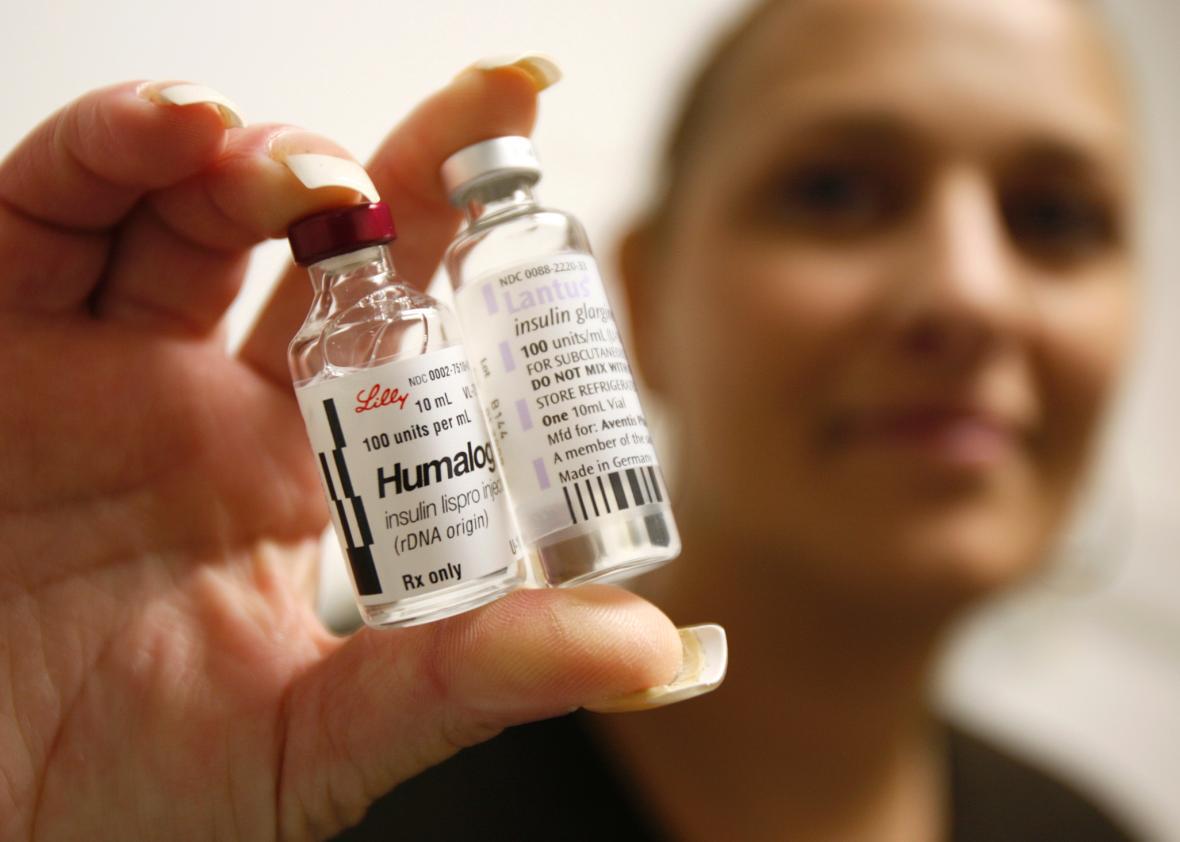At this point, it’s getting hard to keep track of all the stories of drug companies jacking up the prices of prescription medications to nauseating heights for little identifiable reason other than the fact that, unlike in other developed countries, the U.S. government lets them. At the moment, Congress is getting exercised over EpiPens, the fast-acting epinephrine injectors made by Mylan that are used to stop potentially deadly allergy attacks. (I carry one myself, because bees.) Mylan has upped EpiPen prices by 400 percent since it bought the decades-old device from Merck in 2007. The company says the moves are justified by “product improvements,” a line that presumably even they couldn’t possibly believe. Sen. Chuck Grassley has some questions.
On Wednesday I noticed yet another disturbing story about drug prices—one that, despite some coverage in the New York Times and elsewhere, hasn’t become a national scandal quite on the order of the EpiPen or the adventures of Martin Shkreli. It turns out that the cost of insulin, which diabetics rely on to stabilize their blood sugar, has been going through the roof. A study published by the Journal of the American Medical Association in April found that between 2002 and 2013, insulin’s cost had leapt by more than 200 percent, from $231 to $736 per patient annually.
“Insulin is a life-saving medication,” William Herman, one of the study’s authors and a professor of medicine and epidemiology at the University of Michigan School of Public Health, told Stat at the time. “There are people with type 1 diabetes who will die without insulin. And while there have been incremental benefits in insulin products, prices have been rising. So there are people who can’t afford them. It’s a real problem.”
Drugmakers have a few go-to excuses when reporters query them about price hikes. The drugs are typically covered by insurance, so patients don’t really feel the pain. They offer big discounts, so list prices don’t necessarily reflect what people and companies are paying on the market, etc.
What makes the insulin story so disturbing is that it specifically affects patients who are likely to have trouble affording meds. Diabetics tend to be older—the JAMA study found the average user was 60—and many rely on Medicare Part D’s prescription drug benefit to cover their prescriptions. Unfortunately, Part D has a coverage gap, sometimes called the “doughnut hole,” that can force seniors with high drug expenses to pay thousands of dollars out of pocket.
Faced with high costs, many patients seem to be skipping or rationing shots of a hormone they are required to take multiple times a day in order to stay alive, keep from going blind, or lose a foot to amputation. At least, that’s what seems to be happening if you believe the front-line reports from doctors in clinical practice. Take these stories from a recent article in the Missoulian (it got a write-up at Consumerist, which is how I came across it):
Hirsch and many of his colleagues are not subtle when they describe what “price gouging of a medication required for survival” is doing to their patients.
“I had a patient tell me her insulin bill is suddenly costing her as much as her mortgage,” Hirsch said.
Dr. Claresa Levetan, chief of endocrinology at Chestnut Hill Hospital, said “just about 100 percent of them are having problems affording the higher cost of insulin.
“I see people every day in the hospital because they can’t get their required doses of insulin. Many are in the ICU with what is called diabetic ketoacidosis, a life-threatening condition. This lack of insulin brings the patients to a critical juncture, where they will become extraordinarily sick, go into a coma and could ultimately die.
“I have patients who tell me that they have to make a decision between food and insulin, and their rent and insulin.“I mean, seriously, food, rent or insulin,’’ she said.
Why is the price of insulin, a hormone we’ve known about since the 1920s, spiking? There seem to be a few major reasons, all of which speak to the fundamental dysfunctions in the pharmaceutical market. Rather than compete against one another, the three major drug companies that produce insulin in the U.S.—Sanofi, Eli Lilly, and Novo Nordisk—seem to have raised their prices in tandem. As Bloomberg explains, this follow-the-leader approach is called “shadow pricing,” and it’s fairly common in pharma. At the same time, there is no generic insulin on the U.S. market, in part because the branded makers have found ways to extend their patents by making small improvements to the product. There may be more competition on the horizon, as Eli Lilly is expected to start selling a biosimilar version of Sanofi’s Lantus. But experts only expect that to shave 20 or 30 percent off the cost. Pharmacy benefit managers, which handle prescriptions and negotiate with drugmakers on behalf of insurers, are another likely culprit. These companies often receive commissionlike “rebates” from drug producers that may be encouraging them to buy more expensive products for their clients, as Kasia Lipska noted in the New York Times in February.
As always, though, the overriding issue is that unlike most developed nations, the U.S. government doesn’t cap what drugmakers can charge. Instead, we have a semifree market that lets essentially monopolistic drugmakers set prices for essential drugs, with the frequently misplaced assumption that generic competition will lower costs somewhere down the line. In the case of insulin, we’re starting to see the human casualties the system leaves behind.
